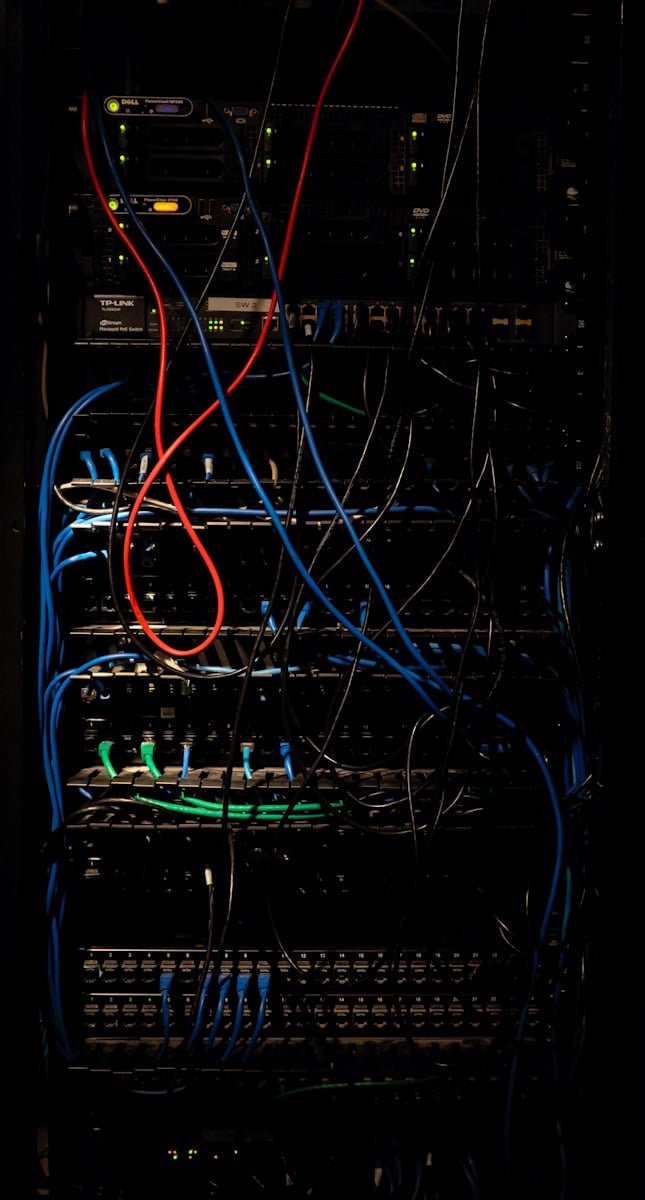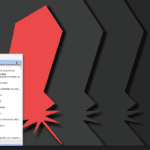Servers form the backbone of modern computing. These powerful machines process requests and deliver data to other computers, known as clients. A server is a computer program or device that provides a service to another computer program and its user.
The client-server model underpins much of our digital world. Web servers host websites, file servers store and share documents, and database servers manage vast amounts of information. Application servers run software for client programs, enabling complex operations across networks.
Different types of servers meet various needs. Web servers handle HTTP requests, delivering web pages to browsers. File servers allow users to access shared files on a network. Database servers store and retrieve data for applications. The table below outlines common server types and their functions:
| Server Type | Primary Function |
|---|---|
| Web Server | Hosts websites |
| File Server | Shares files |
| Database Server | Manages data |
| Application Server | Runs software |
Server Maintenance: Essential Practices for IT Professionals
Servers are the backbone of modern IT infrastructure, and keeping them running smoothly is crucial for business continuity. A proactive server maintenance strategy can prevent costly downtime, optimize performance, and ensure data security.
1. Establish a Maintenance Schedule
- Regularity is Key: Create a consistent schedule for routine maintenance tasks, including daily, weekly, and monthly checks.
- Document Everything: Maintain detailed records of all maintenance activities, including dates, tasks performed, and any issues encountered.
2. Monitor Server Health
- Key Metrics: Continuously monitor critical metrics like CPU usage, memory usage, disk space, network traffic, and server temperature.
- Automated Tools: Utilize server monitoring tools to track performance, receive alerts, and identify potential problems proactively.
3. Apply Updates and Patches
- Stay Current: Keep your server’s operating system, applications, and firmware up to date with the latest security patches and bug fixes.
- Test Before Deploying: Always test updates in a non-production environment before applying them to your live server.
4. Optimize Disk Space
- Free Up Space: Regularly delete unnecessary files, temporary data, and old logs to free up disk space.
- Disk Defragmentation: Periodically defragment your hard drives to improve file access times and overall performance.
5. Ensure Data Backup and Recovery
- Regular Backups: Implement a robust backup strategy with regular backups of critical data, including full backups, incremental backups, and offsite storage.
- Test Restorations: Periodically test your backup and recovery procedures to ensure they work correctly in case of data loss.
6. Review Security Measures
- Strong Passwords: Enforce strong password policies and regularly update passwords for all server accounts.
- Access Control: Implement strict access controls to limit who can access and modify server settings and data.
- Security Audits: Conduct regular security audits to identify vulnerabilities and ensure compliance with security standards.
7. Physical Maintenance
- Clean Environment: Keep the server room clean, dust-free, and properly ventilated to prevent overheating.
- Check Hardware: Periodically inspect server hardware for any signs of damage or wear and tear.
| Maintenance Task | Frequency |
|---|---|
| Monitor server health | Continuous |
| Apply updates and patches | As needed |
| Optimize disk space | Regularly |
| Back up data | Daily/Weekly |
| Review security measures | Regularly |
| Physical maintenance | Periodically |
Server Maintenance Checklist
- Check server logs for errors or suspicious activity.
- Monitor disk space usage and clean up unnecessary files.
- Apply operating system and software updates.
- Run security scans for malware and vulnerabilities.
- Verify backup integrity and test restoration procedures.
- Review user accounts and access permissions.
- Inspect server hardware for any physical issues.
- Update documentation and inventory records.
Server Virtualization
Server virtualization allows you to run multiple virtual servers on a single physical machine. This can improve resource utilization, reduce hardware costs, and simplify maintenance tasks. Popular virtualization platforms include VMware vSphere and Microsoft Hyper-V.
Server Types and Roles
Servers play crucial roles in computer networks. They handle specific tasks and provide services to clients. Different server types meet various organizational needs.
Web Servers
Web servers host websites and web applications. They respond to client requests and deliver web content. Apache, Nginx, and IIS are popular web server platforms.
Web servers use the HTTP protocol to communicate with clients. They process incoming requests and send back responses. This includes HTML pages, images, and other web resources.
Key features of web servers include:
- Load balancing
- SSL/TLS encryption
- Virtual hosting
- Caching
- URL rewriting
Most web servers can handle multiple websites on a single machine. This allows efficient resource use and easier management.
Email Servers
Email servers manage the sending, receiving, and storage of electronic mail. They use protocols like SMTP, POP3, and IMAP to handle email traffic.
Common email server software includes:
- Microsoft Exchange
- Postfix
- Sendmail
- Gmail for Business
Email servers perform several functions:
- Message transfer
- User authentication
- Spam filtering
- Virus scanning
- Mail storage and retrieval
They often integrate with other systems like calendars and contact lists. This provides a complete communication solution for organizations.
Database Servers
Database servers store, process, and manage data. They handle data requests from other applications and ensure data integrity.
Popular database server software includes:
- MySQL
- PostgreSQL
- Oracle Database
- Microsoft SQL Server
Key features of database servers:
- Data storage and retrieval
- Transaction management
- Backup and recovery
- Security and access control
- Query optimization
Database servers are critical for many business applications. They support everything from e-commerce to data analytics.
Application Servers
Application servers host and run software applications. They sit between database servers and user interfaces. This creates a multi-tiered architecture.
Common application server platforms:
- Apache Tomcat
- Microsoft IIS
- IBM WebSphere
- Oracle WebLogic
Application servers provide:
- Business logic execution
- Connection pooling
- Transaction management
- Security services
- Application deployment and scaling
They often support multiple programming languages and frameworks. This flexibility allows developers to choose the best tools for their projects.
| Server Type | Primary Function | Common Software |
|---|---|---|
| Web | Host websites | Apache, Nginx |
| Handle email traffic | Exchange, Postfix | |
| Database | Manage data | MySQL, Oracle |
| Application | Run applications | Tomcat, WebSphere |
Server Architecture and Hardware
Server architecture and hardware form the foundation of modern computing infrastructure. These systems provide the processing power, memory, storage, and networking capabilities necessary to run critical applications and services.
Server Components
Server hardware architecture consists of several key components. The motherboard acts as the central hub, connecting all other parts. Processors (CPUs) handle computational tasks, while random-access memory (RAM) provides temporary data storage.
Storage devices like hard drives or solid-state drives hold long-term data. Network interface cards enable communication with other devices on the network.
Power supplies deliver electricity to all components. Cooling systems prevent overheating. Server chassis house and protect internal components.
| Component | Function |
|---|---|
| Motherboard | Central connection point |
| CPU | Processes data |
| RAM | Temporary data storage |
| Storage | Long-term data storage |
| Network Card | Network connectivity |
Computing Resources
Servers rely on powerful computing resources to handle multiple tasks simultaneously. High-performance CPUs with multiple cores allow for efficient processing of complex workloads.
Large amounts of RAM enable servers to keep frequently accessed data readily available. This reduces the need to retrieve information from slower storage devices.
Server-class hardware is designed for reliability and continuous operation. Error-correcting code (ECC) memory helps prevent data corruption. Redundant power supplies ensure uninterrupted operation.
Advanced features like virtualization support allow servers to run multiple operating systems and applications on a single physical machine. This improves resource utilization and flexibility.
Storage and Networking
Storage systems in servers range from local drives to network-attached storage (NAS) and storage area networks (SAN). These solutions provide scalable capacity for growing data needs.
High-speed networking capabilities are crucial for servers. Multiple network interfaces support increased bandwidth and redundancy. 10 Gigabit Ethernet or faster connections are common in modern server environments.
Servers often use RAID (Redundant Array of Independent Disks) configurations to improve performance and data protection. This technology combines multiple drives into a single logical unit.
Network switches and routers connect servers to local area networks (LANs) and wide area networks (WANs). These devices manage traffic flow and ensure efficient data transmission between servers and clients.
Server Operating Systems and Software
Server operating systems and software form the backbone of modern computing infrastructure. They enable businesses to manage data, host applications, and provide services to users efficiently and securely.
Operating Systems
Server operating systems are specialized software designed for managing server hardware and resources. Windows Server and Linux are two popular choices.
Windows Server offers a user-friendly interface and integrates well with other Microsoft products. It provides robust security features and supports a wide range of applications.
Linux, an open-source option, is known for its stability and flexibility. It’s highly customizable and often used for web servers and cloud infrastructure.
Unix-based systems like macOS Server are also available, offering UNIX-like functionality with Apple’s ecosystem integration.
Each OS has unique strengths. Windows Server excels in enterprise environments. Linux is favored for its cost-effectiveness and performance. The choice depends on specific needs and existing infrastructure.
Server Software
Server software runs on top of the operating system to provide specific services. Web servers, database management systems, and email servers are common types.
Apache and Nginx are popular web server software options. They handle HTTP requests and serve web content to users. Apache is known for its flexibility, while Nginx is praised for its speed and efficiency.
Database servers like MySQL and Microsoft SQL Server manage large amounts of data. They ensure data integrity, handle concurrent access, and provide backup capabilities.
Email servers such as Microsoft Exchange and Postfix manage email communication. They offer features like spam filtering, security protocols, and integration with other business tools.
Virtualization
Virtualization technology allows multiple virtual servers to run on a single physical machine. This improves resource utilization and flexibility.
Hypervisors like VMware vSphere and Microsoft Hyper-V create and manage virtual machines. They allocate resources and ensure isolation between VMs.
Container technologies such as Docker offer a lightweight alternative to full virtualization. They package applications with their dependencies for easy deployment and scaling.
Virtualization benefits include:
- Improved hardware utilization
- Easier server management
- Enhanced disaster recovery capabilities
- Cost savings through consolidation
| Virtualization Type | Examples | Key Benefits |
|---|---|---|
| Full Virtualization | VMware, Hyper-V | Complete isolation, multiple OS support |
| Containerization | Docker, Kubernetes | Lightweight, fast deployment |
| OS-level Virtualization | LXC, Solaris Zones | Efficient resource use, native performance |
Choosing the right virtualization solution depends on workload requirements, existing infrastructure, and IT staff expertise.
Connectivity and Management
Server connectivity and management are crucial for maintaining efficient and reliable operations. These aspects encompass network communication protocols and administrative tools that enable smooth server functioning.
Networking and Communication
Servers rely on various networking protocols to communicate with clients and other servers. DNS (Domain Name System) plays a key role in translating domain names to IP addresses. This process allows servers to locate and connect with each other across networks.
Client-server networking is a common model where clients request services from centralized servers. In contrast, peer-to-peer networking allows direct communication between nodes without a central server.
IP addresses serve as unique identifiers for devices on a network. These addresses enable servers to establish communication endpoints for data exchange. Proper IP configuration is essential for server accessibility and security.
| Network Type | Advantages | Disadvantages |
|---|---|---|
| Client-Server | Centralized control, easier maintenance | Single point of failure |
| Peer-to-Peer | Decentralized, resilient | Complex management, security challenges |
Server Management
Effective server management involves tools and practices to monitor, maintain, and optimize server performance. SQL Server Management Studio (SSMS) is a popular tool for managing SQL Server instances. It provides a user-friendly interface for database administration tasks.
Out-of-band management allows administrators to access servers remotely. This capability is crucial for troubleshooting and maintenance, especially when normal network connections are unavailable.
Failover clustering enhances server reliability by allowing automatic switching to backup systems during failures. This technique improves uptime and data availability in critical environments.
Scalability is a key consideration in server management. Administrators must plan for future growth and ensure servers can handle increased loads without performance degradation.
Regular monitoring of server health and performance metrics helps identify issues early. This proactive approach minimizes downtime and maintains optimal server operations.
Frequently Asked Questions
Servers play crucial roles in computing networks and various industries. They handle data storage, processing requests, and facilitating communication between devices.
What are the different types of servers commonly used in computing?
Common server types include web servers, file servers, and database servers. Web servers host websites and handle HTTP requests. File servers store and manage files for network users. Database servers manage large amounts of structured data.
How does a server function within a network?
Servers respond to client requests in a network. They process incoming data, perform required tasks, and send back results. This client-server model enables efficient resource sharing and centralized data management.
What constitutes the main role and responsibilities of a server in a restaurant setting?
Restaurant servers take orders, serve food and drinks, and ensure customer satisfaction. They must know the menu, handle payments, and maintain a clean dining area. Servers also communicate between kitchen staff and customers.
What factors contribute to the cost of setting up a server?
Server costs depend on hardware specifications, software licenses, and maintenance needs. Powerful processors, large storage capacity, and redundant components increase prices. Ongoing expenses include electricity, cooling, and IT support.
In what way does a Minecraft server differ from other types of game servers?
Minecraft servers host virtual worlds for players to explore and build in. They differ from other game servers by allowing extensive customization and user-generated content. Minecraft servers often support mods and plugins for unique gameplay experiences.
What is the primary purpose of a server within a computer system?
Servers centralize resources and services in computer systems. They store data, run applications, and manage network traffic. Servers enable multiple users to access shared information and computing power efficiently.
| Server Type | Primary Function | Common Uses |
|---|---|---|
| Web Server | Hosts websites | E-commerce, blogs |
| File Server | Stores files | Document sharing |
| Email Server | Manages emails | Business communication |
| Game Server | Hosts game sessions | Online multiplayer |
| Database Server | Manages databases | Data storage and retrieval |






